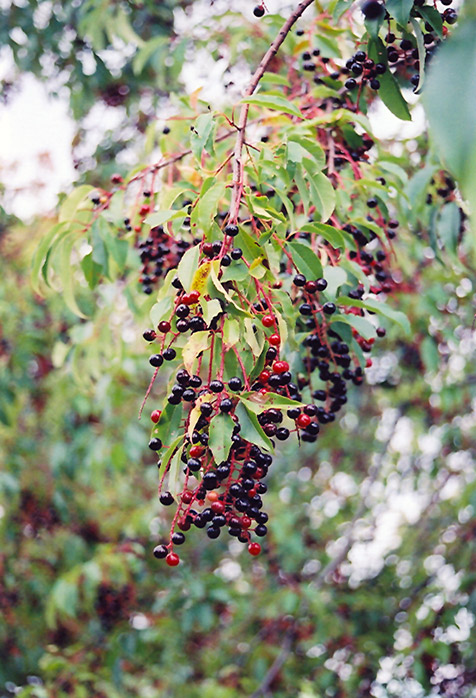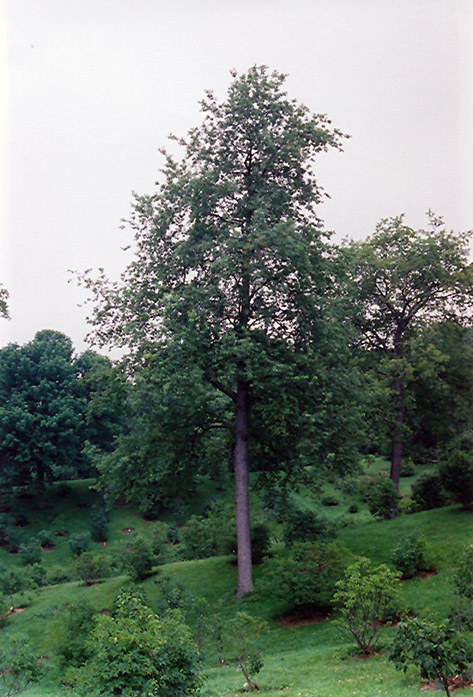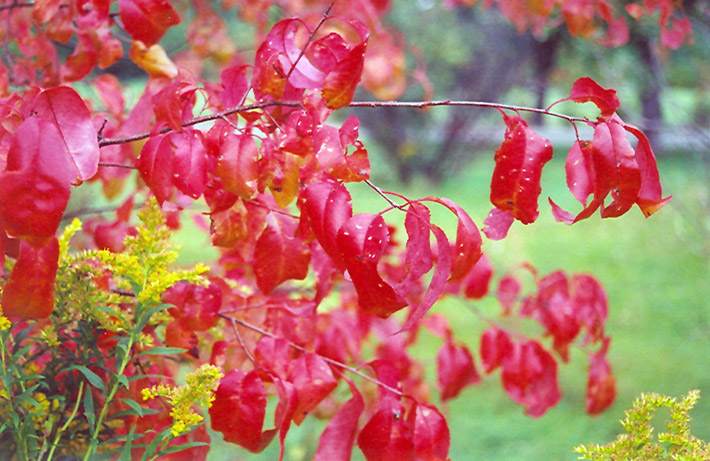Height: 50 feet
Spread: 20 feet
Sunlight:
![]()
Hardiness Zone: 3
Description:
A tall, shrubby tree with racemes of white flowers in spring followed by tart black cherries in summer, good fall color; variable growth habit, tends to seed prolifically, a good choice for naturalizing or a woodland setting
Ornamental Features
Black Cherry features showy racemes of fragrant white flowers hanging below the branches in mid spring. The dark red fruits with black overtones are held in abundance in spectacular clusters from mid to late summer. It has dark green deciduous foliage. The narrow leaves turn an outstanding orange in the fall.
This plant is primarily grown as an ornamental, but it's also valued for its edible qualities. The small round bitter fruit is most often used in the following ways:
- Preserves
- Wine-Making
Landscape Attributes
Black Cherry is a deciduous tree with a shapely oval form. Its average texture blends into the landscape, but can be balanced by one or two finer or coarser trees or shrubs for an effective composition.
This tree will require occasional maintenance and upkeep, and is best pruned in late winter once the threat of extreme cold has passed. It is a good choice for attracting birds to your yard. Gardeners should be aware of the following characteristic(s) that may warrant special consideration;
- Messy
Black Cherry is recommended for the following landscape applications;
- Shade
- Naturalizing And Woodland Gardens
Planting & Growing
Black Cherry will grow to be about 50 feet tall at maturity, with a spread of 20 feet. It has a low canopy with a typical clearance of 4 feet from the ground, and should not be planted underneath power lines. It grows at a medium rate, and under ideal conditions can be expected to live for 60 years or more. This is a self-pollinating variety, so it doesn't require a second plant nearby to set fruit.
This tree should only be grown in full sunlight. It does best in average to evenly moist conditions, but will not tolerate standing water. It is not particular as to soil type or pH. It is highly tolerant of urban pollution and will even thrive in inner city environments. This species is native to parts of North America.




